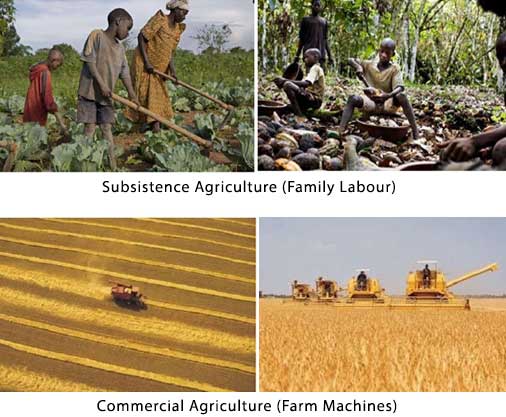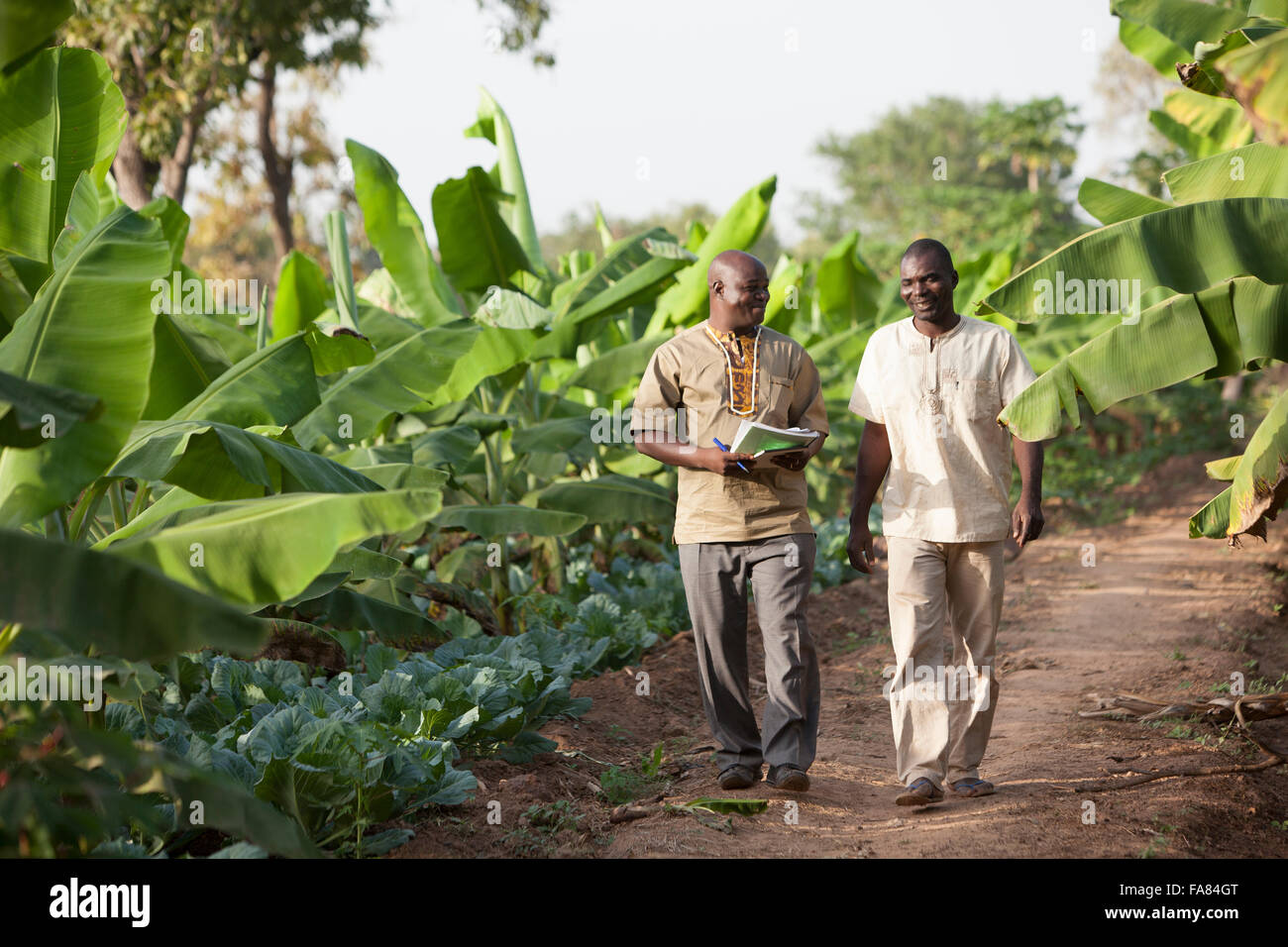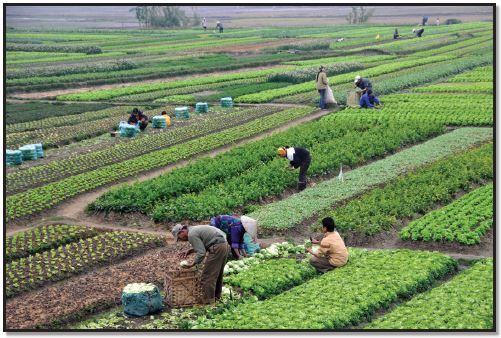How Commercial Farming vs Subsistence Farming Affects Food Safety And Security Worldwide
How Commercial Farming vs Subsistence Farming Affects Food Safety And Security Worldwide
Blog Article
A Thorough Appearance at the Challenges and Benefits of Modern Farming
Modern farming stands at the crossroads of development and sustainability, presenting a multitude of obstacles and possibilities. The course ahead demands a mindful assessment of these dynamics, welcoming stakeholders to think about the potential for transformative adjustment in agricultural practices and plans.
Technological Advancements in Farming
Innovations such as precision farming, automation, and biotechnology have transformed standard farming techniques, allowing for more rewarding and lasting operations. Precision agriculture uses GPS innovation, sensing units, and data analytics to enhance field-level monitoring regarding crop farming.
Automation in farming has even more driven the industry ahead, with the introduction of self-governing tractors, drones, and robotics. These innovations minimize labor needs and raise operational rate, permitting prompt planting and harvesting. Drones, specifically, supply beneficial airborne images and information, helping farmers in checking crop health and wellness and spotting issues early.
Biotechnology has actually likewise played an essential duty in advancing agricultural methods. Genetically modified organisms (GMOs) have actually been created to boost plant resistance to illness and insects, decrease reliance on chemical therapies, and boost nutritional web content. This modern technology adds to food protection and satisfies the demands of a growing international populace. Jointly, these technological developments have prepared for a much more durable and sustainable agricultural future.
Environmental Difficulties
Agriculture encounters several environmental obstacles that endanger its sustainability and performance. The long-term feasibility of farming land is compromised, requiring the fostering of even more lasting techniques.
Water scarcity is one more substantial challenge, specifically in regions where farming greatly relies on irrigation. Climate adjustment is escalating this problem, changing rainfall patterns and boosting the regularity of dry spells. Reliable water monitoring systems, such as drip irrigation and rainwater harvesting, are vital to minimize these effects, yet their execution remains uneven across various regions.
Furthermore, farming is both a contributor and a target to environment change. Attending to these environmental obstacles is vital for making certain a sustainable agricultural future.

Economic Impacts
The financial effects of contemporary agriculture are multifaceted and extensive, affecting both local and international markets. Developments in innovation and manufacturing techniques have dramatically boosted agricultural performance, causing much more reliable food supply chains and minimized costs for customers. This enhanced efficiency has actually allowed countries to satisfy expanding demands, maintain food costs, and contribute to financial growth. Additionally, the export of agricultural products has actually become a significant resource of revenue for lots of nations, playing a vital role in their economic growth.
The capital-intensive nature of modern-day farming requires considerable investment in machinery, fertilizers, and genetically modified seeds, which can be economically burdensome for small farmers. In addition, worldwide market changes can impact the profitability of farming exports, making economic climates reliant on agriculture susceptible to financial instability.
In addition, aids and trade policies in developed nations can distort market prices, influencing competitive equilibrium and potentially disadvantaging farmers in creating countries. On the whole, while contemporary agriculture drives financial growth, it also requires browsing complex economic landscapes to guarantee lasting and fair development.
Social Effects
While modern farming has actually brought about substantial innovations, it likewise provides numerous social implications that call for factor to consider. One significant issue is the variation of small farmers as a result of the surge of big agribusinesses. As business farming entities significantly dominate the agricultural landscape, smaller sized ranches frequently battle to complete, leading to the erosion of rural areas and traditional farming practices. This shift can lead to a loss of neighborhood expertise and cultural heritage that smaller farms sustain.

Furthermore, there are More Info issues regarding food safety and security and sovereignty. The focus on monoculture and genetically modified plants can weaken biodiversity and make food systems a lot more prone to conditions and bugs. Such methods might also restrict consumer choices and reduce see it here the capacity of regional neighborhoods to regulate their food resources. As these social effects unravel, it ends up being important to resolve them to guarantee equitable and lasting farming development.
Future Instructions
Looking ahead, numerous appealing methods for contemporary agriculture might address the obstacles faced today while cultivating sustainable development. Advances in technology, such as accuracy farming, use the potential to enhance source use and increase performance. By employing information analytics and artificial intelligence, farmers can make informed decisions pertaining to crop administration, bring about minimized input prices and minimized ecological impact. The integration of renewable energy resources into farming techniques might significantly decrease reliance on fossil fuels and contribute to reduce greenhouse gas exhausts.
Biotechnology additionally holds tremendous assurance for the future of farming. Genetically changed microorganisms (GMOs) and genetics modifying methods, like CRISPR, might enhance crop resilience versus environment adjustment, bugs, and illness, therefore enhancing food safety and security. Furthermore, diversifying crop varieties to consist of even more nutrient-dense and climate-resilient choices might reinforce both environmental stability and human nourishment.

Conclusion
Modern agriculture, defined by technological developments, presents both opportunities and obstacles. While advancements such as precision farming and biotechnology enhance efficiency and sustainability, they also add to ecological problems like soil destruction and water shortage. The economic impacts are significant, leading and impacting small-scale farmers to wider social implications. Addressing these intricacies requires a transition in the direction of sustainable methods that balance performance with environmental stewardship and social equity, therefore making sure a durable future for worldwide farming systems.
Modern farming stands at the crossroads of advancement and sustainability, offering a wide range of Go Here difficulties and possibilities. Furthermore, international market fluctuations can impact the profitability of agricultural exports, making economic climates reliant on farming prone to financial instability.
Moreover, the extensive use of modern technology and mechanization in agriculture has led to a reduction in farming employment possibilities.Looking in advance, several promising opportunities for contemporary farming could address the difficulties dealt with today while promoting lasting development. commercial farming vs subsistence farming.Modern farming, defined by technological developments, provides both opportunities and difficulties
Report this page